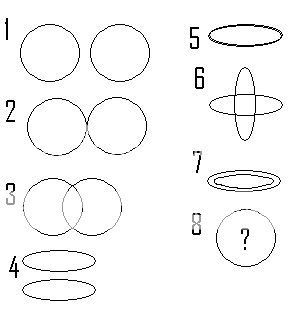- The Six Invisible Enemies
- Complacency
- Ego
- Fickleness
- Impatience
- Perfectionism
- Unhealthy Comparisons
The Six Invisible Enemies are obstacles which all students must face throughout the course of their training. Learning to overcome each of these obstacles and consistantly rededicating one's self to training is the key to sustaining long steady practice.
1. Complacency. This is the attitude of accepting the progress that you have made and finding comfort with your current position. There is nothing inherently wrong with working within your comfort zone, but refusing to work outside of that zone will prevent you from ever growing beyond it. Complacency stops black belts from sticking around to really learn martial arts. It's what keeps people in the past and traps them in practices and traditions that they are too afraid to abandon, because they are unprepared for what may lie beyond the edge of their knowledge base.
2. Ego. Ego is the attitude of superiority, either in one's self, one's curriculum, or one's execution, which prevents the student from exploring the perspectives of others. A belief that one already has the answers prevents that person from asking any more questions. While some may indeed be endowed with great knowledge or physical prowess, that need not prevent them from exploring what other's have to offer.
3. Fickleness. Fickleness describes the students who show up at your school with experience in nine other martial arts already, sign up for your training program, show up every day for a month, and then move down the road and repeat the process again at the next school on the block. These students never receive more than the most basic, rudimentary exposure to any martial tradition, and will constantly be chasing mastery without ever allowing themselves a chance to find it. Fickleness prevents the student from learning those things which truly take years of dedicated study to even begin to understand.
4. Impatience. Impatient students are constantly looking for the next technique, the next trophy, the next stripe on their belt. They lack the patience to spend time focused on one basic, or one technique, long enough to internalize the lessons it contains. Because of this, no matter how much material the student accumulates, none of it will achieve a high level of effectiveness. Eventually, this student will simply move on to somewhere where they can learn more material faster and easier.
5. Perfectionism. When the student consumes himself with perfectionism he finds his performance will never be sufficient. No matter how many repetitions or how exacting his practice, the student will be consumed with the flaws he perceives, however minor. While understanding the areas which must be improved upon in one's performance is important, when it becomes an obsession the student loses the ability to put his improvement into perspective. This student will become consumed with his inability to achieve perfection and, despite whatever gains he may make, will eventually decide he can not achieve the level of perfomance he demands of himself and instead simply give up rather than accept what he perceives as defeat.
6. Unhealthy Comparisons. Comparing one's performance to that of one's peers is a healthy way to make objective decisions about where one stands in relation to those peers. It does not tell you how "good" you are, but merely how "good" you are in comparison. That may have value, but when it becomes an obsession it becomes unhealthy. When the student is consumed with being better than that guy, or hitting harder than that one, or moving faster than that girl, what is essentially an independant unique study becomes an external pursuit of accolades. At this point, personal performance is sacrificed in pursuit of interpersonal gamesmanship.
The Six Invisible Enemies can prevent the student from moving forward towards their goals. While enemies faced in the street may have clubs, knives, or guns, the enemies from within can be debilitating and dangerous in their own way, and can do just as much to prevent a student's progress in the art.
-Rob

